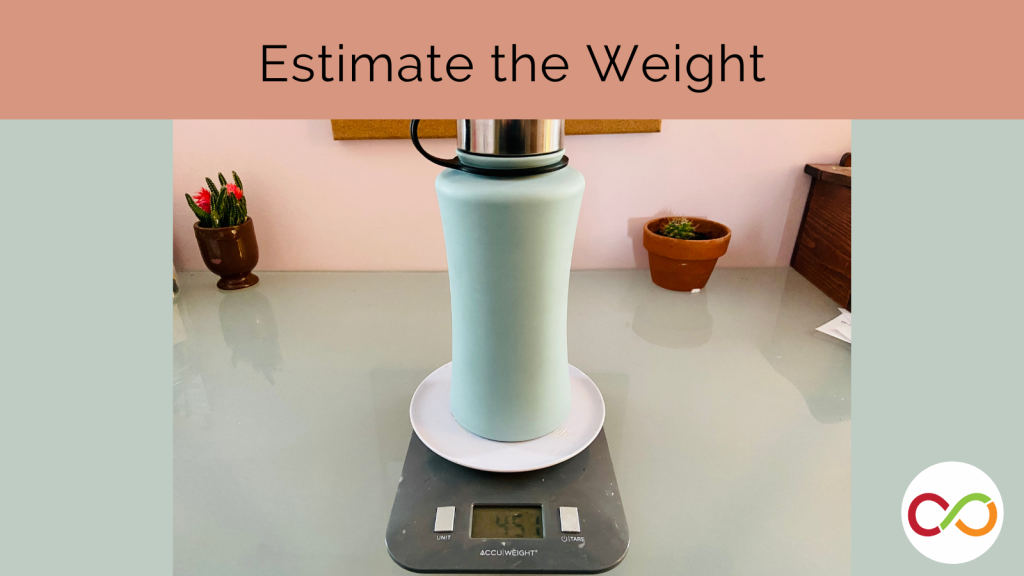Estimate the Weight
Junior (Age 9 – 12)
Curriculum Goal
Junior: Geometry and Spatial Sense
- Use appropriate metric units to estimate and measure length, area, mass and capacity.
Context
- One to five students seated in a circle around the scale with the teacher.
- Students should have prior experience with the metric system of measurement and units of measuring mass.
- Students should understand how many grams are in a kilogram.
- Students should be confident or familiar with subtraction of single and double digits.
Materials
- A digital scale (a spring scale that measures in grams can also be used)
- Estimate the Weight! tracking sheet (See Appendix A)
- Strategy cards (See Appendix B)
- Objects that have the same volume, but different weights
- Objects that differ by more than a few grams
- Objects should be everyday items students have experience holding (e.g., 1L bottle of pop, a candy bar, a pencil)
- Writing materials
- Calculators, if necessary
- Clipboard (optional)
Lesson
- Students estimate mass using grams as a unit of measurement.
- Objects for weight estimates should be chosen by the teacher and displayed around the scale. There must be a variety of objects that will be instructive in developing children’s knowledge of the unit of measurement being explored (e.g., grams and kilograms).
- Grab an object and ask students what unit of measurement makes sense to measure the weight of that object. Direct the conversation so that students talk about grams and kilograms and no other unit of measurement.
- Ask students whether they know the exact or rough weight of any objects in their lives.
- Model the process of holding the item in your hand, estimating the weight and putting it on the scale.
- Have students fill out the “Weights I Know!” and “ETW! Number Line” handout (See Appendix A). Explain that students can use the weights of items they already know as benchmarks to compare new items being weighed.
- Each round, students choose one of the objects and record the name of the object in the box labeled “object name.”
- Each student then has an opportunity to hold the chosen object and make a secret guess as to how much the object weighs. They write their estimates in the “your estimate” box. Students must not reveal their estimates to the other players.
- Students must fill in the box labeled “estimation strategy/notes” to explain their reasoning for their estimation. If students find the rationale explanation challenging, they can pull one strategy card to help them. Students can also share their rationale verbally.
- When secret estimates have been made, students weigh the object on the scale to find its weight. They write the weight in the box labeled “actual weight”.
- Students calculate the difference between the actual weight and their estimate and put their results in the box labeled “difference”.

Look Fors
- Do students make realistic estimates using the appropriate metric units?
- Do students explain their reasoning for their estimates?
- Are students learning from their mistakes to make more realistic estimates as they continue?
- What strategy does the student implement to calculate the difference in their estimate and the actual weight?
Extension
- Integrate multiplication and addition by asking questions like, “If the object weighs four grams, how much do six of these objects weigh?”
- Integrate division. For example: “If this item weighs 800 grams and costs $2, and this other item weighs 950 grams and costs $1.25, which item is cheaper per unit of measurement?”
- Teach students there is a difference between measuring solid objects (mass) and liquid (volume). Repeat the activity above using units of volume to measure liquids.
Created by Jonathan Silver. Adapted by The Robertson Program.
Share this lesson
Share on facebook
Share on twitter
Share on email
